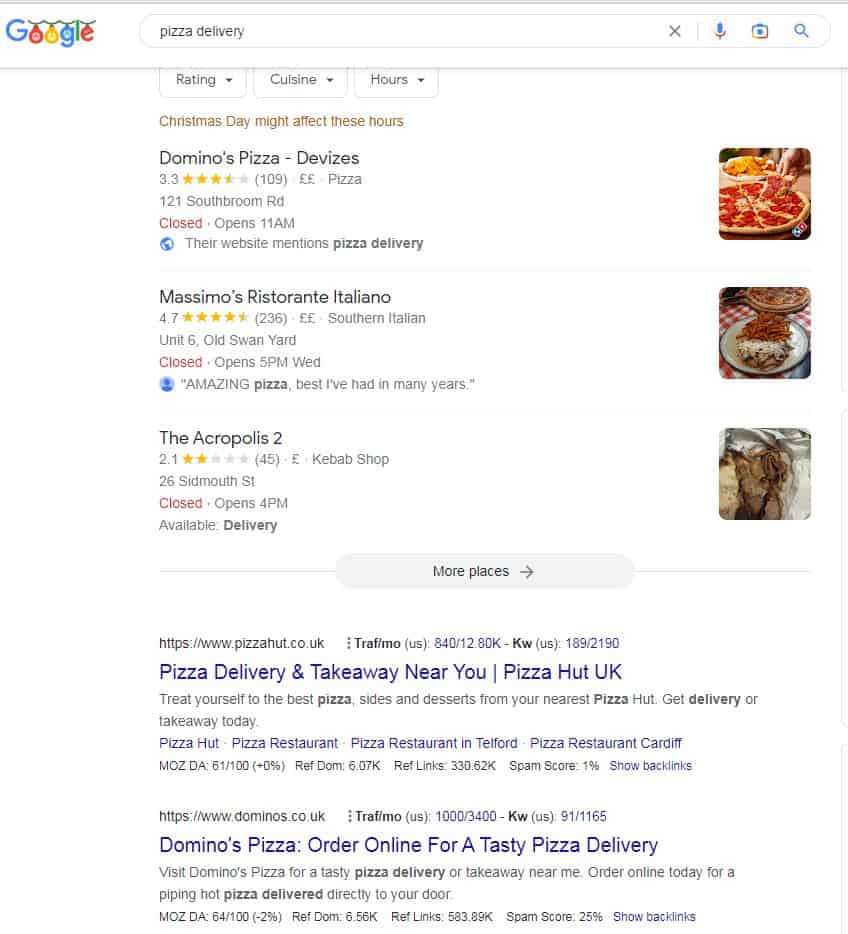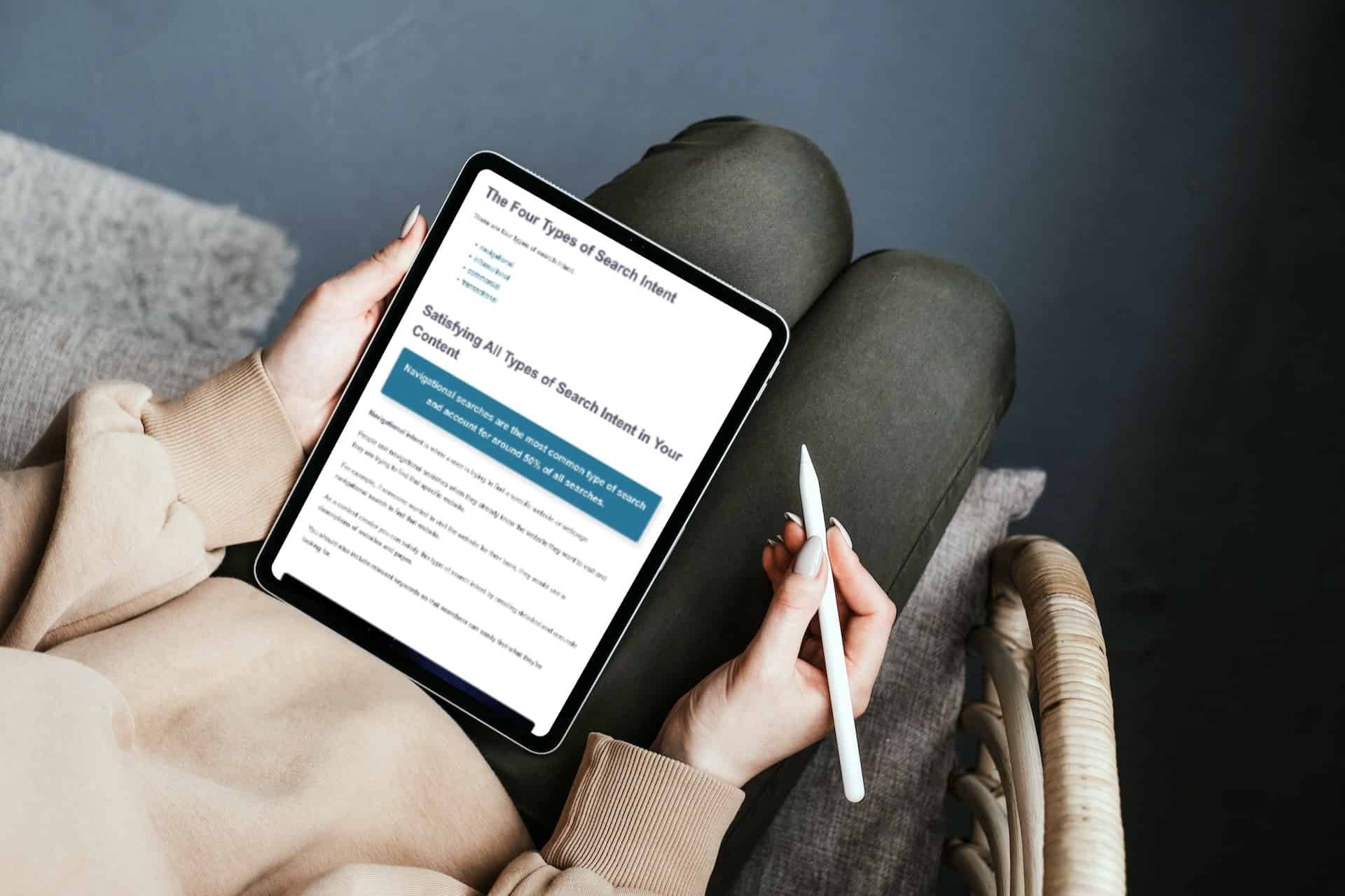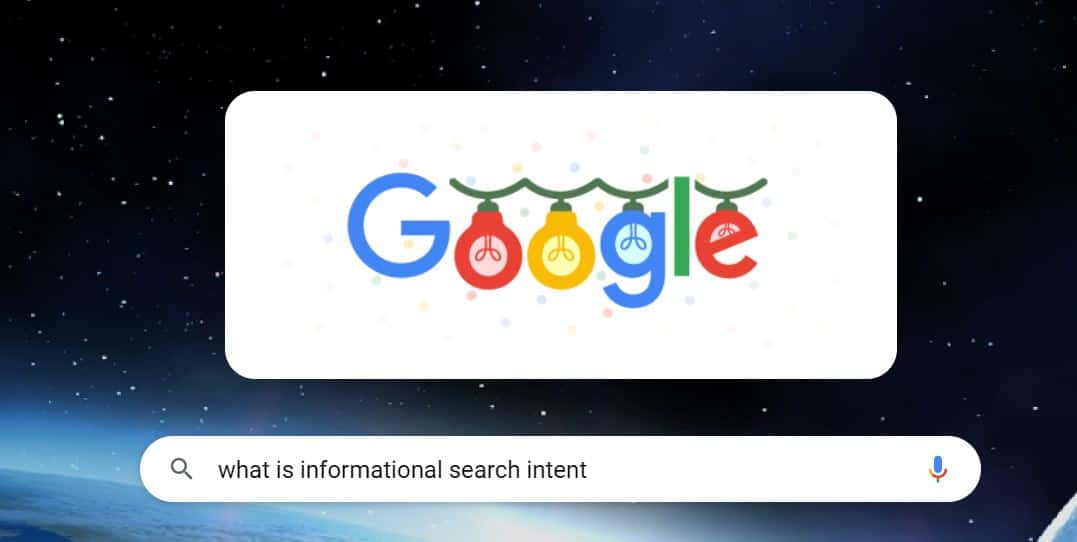The first thing to say is that understanding search intent is half the battle for successful blogging.
Get this right and life is going to easier, but get it wrong and it’s a likely you will be faced with a town full of tumbleweed.
It should be noted however, that while search intent is important in helping readers find what they need quickly, it should never come at the expense of high quality content.
We still need to be able to write SEO Friendly, high quality content, which is accompanied by a perfect blog post title
It’s a balance but you need to do this if you want to maximize the effectiveness of your blog posts and the overall impact to your website
The Key for Crafting High-Performing Content? Unlocking Search Intent
There’s no question that high quality content is king.
The more high-quality content you produce, and publish properly, the more likely you are to rank well in search engines and attract leads and customers.
But what to do if you’re not sure how to create content that performs well?
You need to start by unlocking search intent
Search Intent: What It Is and Why You Should Care
Search intent is a concept that has become increasingly more important in the world of content creation, and SEO, as it can be powerful to help you understand what people are looking for when they search online.
Understanding search intent helps Writers create content which is tailored to their audience’s needs.
It’s more than just matching keywords; it’s about understanding the core purpose behind every query and delivering results that meet the user’s needs.
When it comes to crafting content understanding search intent is invaluable.
After all, if you don’t know what people are looking for when they enter a search term, then your content won’t be relevant or helpful…let alone high performing.

How to Determine Searchers’ Intentions
When creating content it is important to consider what searchers are looking for and why they are looking.
There are a few ways to work out a searchers’ intentions:
Look at the SERP (Search Engine Results Page)
When you perform a search yourself take a look at the results that come up on the SERP.
This can give you an idea of what Google thinks people are looking for when they search for a particular term or phrase.
For example, if you search for “pizza delivery,” under the google maps entries you will likely see results for pizza restaurants that offer delivery services.
This tells you that Google thinks people who search for this term are looking for places that deliver pizza’s to their customers and so they show those results

Consider the Keyword(s) Used
The keywords or key phrases that people use in their searches can also be indicative of their intent.
For example, someone who uses the keyword “buy shoes” is probably looking to buy some shoes,
while someone who uses the keyword “shoe size conversion” is likely trying to find out how to convert shoe sizes.
By considering the keywords that people use, you can get an idea of their intent.

The Four Types of Search Intent
There are four types of search intent:
Satisfying All Types of Search Intent in Your Content
Navigational intent is when a user is trying to find a specific website or webpage
People use navigational searches when they already know the website they want to visit and they are trying to find that specific website.
For example, if someone wanted to visit the website for their bank, they would use a navigational search to find that website.
As a content creator you can satisfy this type of search intent by creating detailed and accurate descriptions of websites and pages.
You should also include relevant keywords so that searchers can easily find what they’re looking for.

Informational searches are the second most common type of search & account for around 30% of searches.
Informational intent is when a user is looking for information about a topic
If someone has informational intent, they’re looking to learn something.
People use informational searches when they are looking for information about a topic.
For example, someone might use an informational search to find out how to fix a leaky faucet/tap.
To satisfy this type of search intent, you need to create informative and educational content.
This can include blog posts, articles, info-graphics, videos, and more.
Obviously make sure your content is well-researched and accurate so that searchers can trust what they’re reading.
Read my article How To Write A Great Blog Post to get some clear direction on how to go about this.
Once again you should also include relevant keywords so that searchers can easily find your content.

Commercial searches are the third most common type of search and account for around 15% of all searches
Commercial intent is when a user is interested in a product or service and is conducting research.
They’re looking to buy something they’re just not quite ready to get their credit card out.
When people use commercial searches they are interested in buying a product or service, they might search for “best smartphone” or ‘best “smartphone reviews”‘
To satisfy this type of search intent you need to create persuasive and convincing content that will convince readers to make a purchase.
This can include product reviews, buyer’s guides and comparison articles.
Make sure your content is unbiased and honest so that readers can trust your recommendations.
You should also include relevant keywords so that searchers can easily find your content.

Transactional searches are the least common type of search and account for around 5% of all searches
Transactional intent is when a user wants to complete a transaction, such as downloading a file or making a reservation
People use transactional searches when they want to complete a transaction, such as buying a product or making a reservation.
Transactional intent is when someone is looking to do something, such as “download Skype” or “book a hotel room”
Writing for Your Target Audience: Tips for Understanding Their Needs
As a writer it’s important for you to understand your target audience and what they need from you.
There are a few key tips to keep in mind when trying to do this:
First, consider what they want to achieve.
- What are their goals?
- What are their values?
- What do they need to know in order to make a purchasing decision?
Once you understand what they’re trying to accomplish, you can tailor your content to fit their needs.
Second, think about how they like to consume content.
- Do they prefer long-form articles or short blog posts?
- Are they more likely to watch a video or read an eBook?
Knowing how they like to consume content will help you create material that they’re more likely to engage with.
Finally, keep in mind that their needs may change over time.
As their goals and values evolve so too will the type of content they’re looking for.
It’s important to stay flexible and adjust your strategy as needed in order to always be providing them with the information they need.
Final Thoughts
There is a lot to unpack here and understanding search intent is something you will get better at the more you think about it.
Already just by realising its importance you are on your way to putting yourself above most content creators, who won’t be thinking about it.
Most Bloggers write about things they are interested in, it’s kind of like they need to get something off their chest, even if no-one is searching for that content.
Remember it’s also important to create content that satisfies the needs of each type of searcher, whether they have navigational, informational, commercial or transactional intent.
And always try and keep in mind what your target audience is and what they need from you.
Consider the goals your readers are trying to achieve and how they like to consume content so you can better tailor it to fit their needs.
Finally, be flexible and adjust your strategy as needed in order to always provide them with up-to-date information that meets their changing requirements.
With these tips in mind you should be able to successfully create content that speaks directly to your customers’ wants and needs!
As I mentioned at the beginning of the post, it’s also worth learning about the following:
- How To Write Great Blog Titles
- How To Write A Great Blog Post That Ranks Well
- How to Write On Page SEO Friendly Content
They all play an equal part in being able to produce great content that ranks well.


